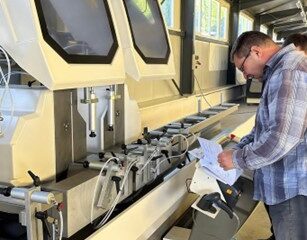Accidents involving a machine at the workplace may result in disastrous actions characterized by injuries, damage, and even death. Businesses lose lots of money due to such accidents. It is, therefore, advisable for companies to formulate a machine safety plan as one of the measures for reducing risks. This should include adherence to rules and regulations, compliance, identification of hazards and assessing risks, safety working practices, and regular maintenance and inspection.
Developing a Machine Safety Strategy
A machine safety policy helps to prevent mishaps, injuries, and fatalities from or involving machinery and equipment in the industrial setting. This approach develops and identifies risks and applies practical means of risk reduction techniques. Thus, through this aspect, industries can comply with the regulations provided and ensure a safe working environment using machine safety procedures. A machine safety services company offers its expertise to establish machine safety compliance and meet industrial standards and regulations set by law and various organizations to ensure the safety of the workplace.
It is important that the machine safety strategy and its implementation be a holistic approach, implying the implementation of safe work procedures, putting protections in place, doing risk assessments, and laying out routine maintenance and inspections. Machine safety ensures equipment efficiency; by making it a priority, the overall safety of workers increases as well. The machine safety service helps to maintain and efficiently run the equipment, reduce wear and tear, and thus improve the overall efficiency of the workplace.
Adhering to Compliance, Safety Regulations, and Industrial Standards
Adherence to industrial norms and legislation can guarantee only machine safety. Some of the standards where guidelines are provided for machine designing, risk assessment, safety precautions, training for operators, and maintenance are ANSI B11.0 and ISO 12100. Industry-specific safety regulations and regional requirements even include the Machinery Directive of the European Union and OSHA Standards of the United States. Audits and investigations are significant roles that regulatory authorities have to play to maintain standards of safety and ensure conformity.
Non-conforming to safety laws has serious outcomes that include the loss of finances and legal penalties and losing judgments within a court of law, violation of safety laws, reputational damage, and most importantly, the potential for accidents and personal injury. When you hire machine safety experts, they are professionals who have incredible knowledge about machine safety and how best to implement it.
Machine safety service providers are always aware of the latest updates in terms of machine operation safety as per the latest trade journals, attend safety conferences, and provide consultancy as specialists to owners of manufacturing units interested in staying updated regarding changing safety standards and laws. Organizations have to proactively ensure their machine safety measures are within the current regulations and best practices, and the best is to hire machine safety service providers.
Identification of Any Hazards: Conducting Risk Assessment
Hazard identification and risk assessment are some of the major steps that industrial operations must undertake to address machine safety. The processes involve systematically identifying and locating possible risks associated with the machinery and equipment and then quantifying the level of risk both in terms of likelihood and severity. Proper risk assessment and hazard identification assist in developing and implementing effective risk reduction controls.
First, get as much information as possible about the apparatus, including its design, working, and maintenance. A proper hazard analysis has to be carried out to perform a detailed examination of all potential hazards.
Experts in machine safety services assess each hazard with respect to factors such as the probability of occurrence, frequency of exposure, and the degree of injury one can suffer. Develop and implement control measures for the hazards that may comprise administrative controls, PPE, and engineering controls such as machine guarding and safety devices. Review the risk assessment and identification of hazards from time to time, especially after changes have been made to the environment, equipment, or process. Record the procedure followed, the conclusions drawn, and the control measures enforced.
Safe Work Procedures
Machine safety service providers note that well-defined, documented work procedures are the basis for safe and efficient operations. Key actions include writing clear, specific procedures that define actions, hazards, and safety considerations. Diagrams and flowcharts can also be helpful. Training employees in the procedures is essential; the opportunity for hands-on demonstrations and open question-and-answer sessions will ensure that all employees understand their role in meeting safety responsibilities. Furthermore, procedures should be reviewed from time to time to keep in line with the changing regulations and ensure that they continue to be safe and healthy for employees, as suggested by these employees. Procedure enforcement does play a role, but this is appraised in audits and incident analyses, which help manufacturers control risk and further offer a safe and productive working environment.
Regular Maintenance and Accident Reporting
Regular maintenance is essential to the safety of workers as well as the efficient operation of machines. Safety experts assert that machinery malfunctions or breaks down less frequently when properly serviced; consequently, accidents are less likely to occur. Thus, visual inspections, functional testing, lubrication, appropriate adjustment as needed, and timely repair are called for in routine maintenance. The frequency of maintenance shall adhere to the manufacturer’s recommended machine-specific guidelines. In addition, a strong accident reporting and investigation system is necessary. This system helps recognize hazards and develop preventions that make the place of work safer. Joint working with safety experts thus enables the practice to be carried out correctly, supporting safety and efficiency in all operations.
Conclusion: Their implementation not only mitigates workplace accidents but also enhances efficiency in operations and industrial compliance standards. Organizations that hire machine safety service providers can benefit through risk assessment from experts, proper adherence to regulatory guidelines, and efficient maintenance of practices. A proactive approach to machine safety promotes a safer and more productive environment both in terms of regulatory compliance and the protection of workers.
Read more latest news here on Twinklecrest.com




